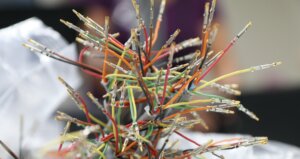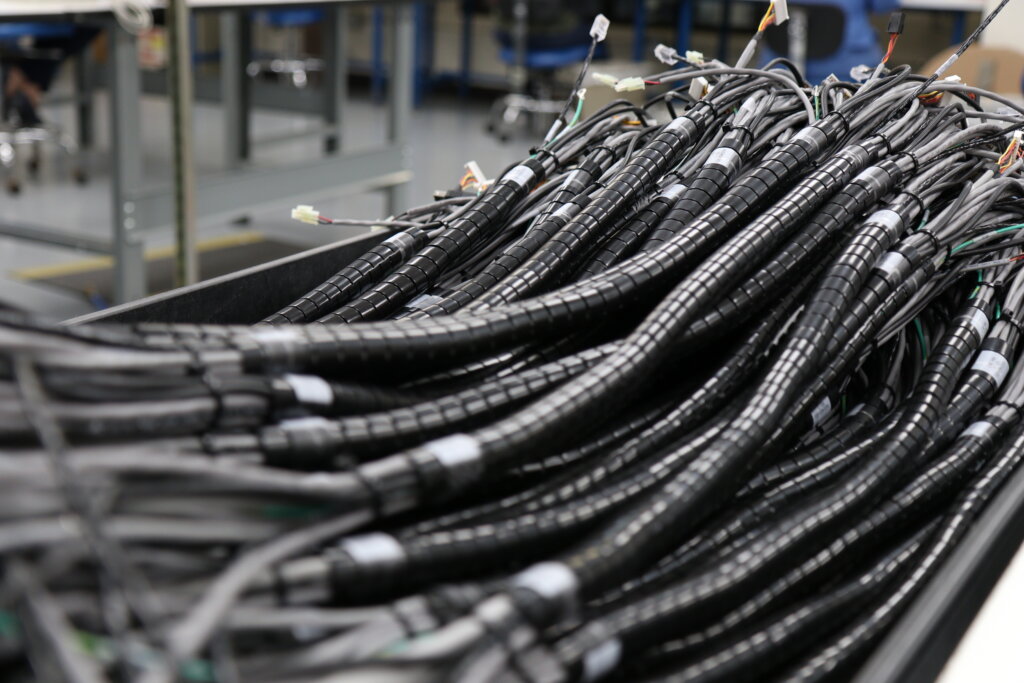Anatomy Of A Cable
Trevor Hendricks2024-06-11T21:12:31+00:00At iRex, clients often come to us with complex and sophisticated cable builds. Despite the level of complexity our work typically deals with, every cable assembly is grounded in some common basics. Each cable can be broken down to its conductor, plating, wire stranding, wire insulation, shielding, jacket, and terminal. Let’s walk through the options for each and explore how to choose what may be right for your product
Conductor
At the center of every cable, literally, is a conductor – a conductive piece of metal that carries an electric charge or signal from one terminal to another. A wide variety of metals can be used, including copper, platinum, stainless steel, and a variety of alloys that typically involve copper. The four main considerations to keep in mind when choosing a conductor are conductivity, cost, flexibility, and temperature range.
Pure copper is second only to silver when it comes to conductivity, but is a good deal less expensive to use, which is why it is the most commonly used metal. Copper does have a relatively low service temperature, meaning that it does not carry a charge as well at higher temperatures. This can be mitigated through plating with more heat-resistant metals.

Plating
Plating offers a way to combine the best qualities of multiple types of metal. Three of the most common types of metal used in plating are tin, silver, and nickel. Use tin if your build needs added solderability and resistance to corrosion, use silver for better conductivity, and use nickel for better heat tolerance and durability.
Wire Stranding
The decision between solid or stranded conductors typically rests on two variables: cost and flexibility. Stranded cables, where the conductor is composed of multiple cables intertwined together, offer more flexibility and should be used if the cable experiences constant movement, like in the robotics or automotive industries.
Solid conductors, like the name implies, are made of one solid piece of metal in the center. What this type of wire lacks in flexibility, it makes up for in durability and increased conductivity. Using a solid conductor still generally costs more than the stranded alternative, but modern manufacturing practices have bridged this gap to an extent. The most common application of using solid conductor cabling is the buried power cables that link residential areas to transformers.
Wire Insulation
If you count plating, wire insulation comes as the second line of defense for the cable’s conductor. Typically made from plastics, insulation is used to protect the conductor from moisture, corrosion, and excess heat. These plastics are divided into two main groups, thermoplastics and thermosets.
Thermoplastics like PVC and Polyethylene can absorb heat to an extent, but will soften and melt when exposed to extreme temperatures. Thermoset plastics like CPE will not melt, but become “rubbery” when exposed to high heat. It is important to bear in mind when evaluating effective heat ranges for cables that generally two values are given – the temperature a cable can operate in when static, and the temperature it can operate in when constantly flexed and moved.

Shielding
The next line of defense for a cable comes from its shielding. Shielding is used specifically to prevent electrical interference or “cross-talk” from disrupting a cable’s performance. Rather than choosing between materials, one must choose how the shield is incorporated into the cable. Shielding added as foil or in a spiral pattern works to prevent low-level frequencies, while braided shielding prevents high frequency. As one might expect, combining two of these methods, such as foil and braided, offers great protection from all frequencies and is recommended for high-noise environments, like utility plants.
Another consideration for shielding is the flexibility needed. Braided shielding is less flexible than foil shielding, but will last longer in a high-movement environment.
Cable Jacket
A cable’s jacket is the final layer of protection and the material choice largely falls along the previous considerations with a few added – cost, flexibility, temperature, flammability, outgassing.
The most common types of cable jackets tend to be the most affordable: PVC, PE, and PP. They offer good flexibility, but operate in a lower temperature range than more expensive alternatives. They also are decent flame retardants, but release trapped chemicals as gas over time, which is known as outgassing. Outgassing can be a problem in applications with sensitive equipment, such as test and measurement equipment and aviation.
More expensive options include different variations of Teflon. With these options, cables lose flexibility but gain increased flammability protection, higher temperature limits, and decreased outgassing.
Terminals
We’ve spoken at great length in other articles about the various ways to terminate a cable, specifically through crimping. Crimping remains the best way to terminate a cable for many situations, but those situations and the crimps and terminals they call for vary widely.

Now that we have covered the basics, let us show you how we take these core concepts and elevate them into some of the most complex and value-added cables on the market! Reach out today and let’s start a conversation.






